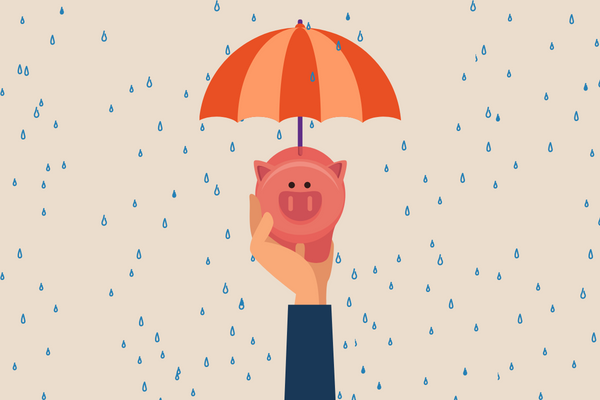

Now, the idea of an automated savings buffer isn't new. History is littered with real (and mythical) people who relied on specific techniques to resist temptation.
The first known practitioner of such voluntary bondage (sounds saucier than it was) was the legendary Greek king of Ithaca, Odysseus, en route home from the Trojan War. As his ship neared the Sirens, he was determined to hear their enchanting song without going overboard.
Now, necessity being the mother of invention, his strategy was to create an internal commitment device by first choosing a freely-made commitment and then binding himself to honour it.
"You must bind me," Odysseus instructs, "so I cannot move a muscle, bound to the spot, erect at the mast-block, lashed by ropes to the mast. And if I plead, commanding you to set me free, then lash me faster."
While it might seem a strange way to decide things now, his skill at manipulating his desires makes Homer's The Odyssey timeless and relevant today.
Let's look at a more modern example.
In a Shark Tank episode, inventors and entrepreneurs David Krippendorf and Ryan Tseng pitched their Kitchen Safe (now marketed as the kSafe), a time-locking container.
Krippendorf said he was inspired to force self-control on himself and curb his cravings for cookies. The concept is simple: Put whatever you want in the storage container, lock the lid, and you can't get at it until the timer expires.
Behavioural scientists call these techniques' commitment devices,' because anytime you do something that reduces your freedoms in service of a greater goal, you use a commitment device.
The problem is, how to adhere to them? Well, commitment devices are a proven way to make meaningful progress towards your savings goals.
So, what sorts of commitment devices could you employ in your finances? One great strategy is setting up automatic, recurring contributions to a specific account. When you combine automated contributions to 'locked' accounts, you're doubling down on your savings commitment.
And sure, you could turn off those contributions at any time, but it's easier to stay committed when the saving happens automatically.
While it's nice having specific savings goals and more general ones set up, it's also good to have savings that act as a buffer fund to tide you over for major payments or occasional spending that doesn't derail your progress.
If you're like most of us, it's not too difficult to find something you want to buy but don't necessarily need, which is where a splurge or 'buffer' fund can come in handy. Having a pool of money to spend on small splurges can prevent you from going overboard.
Consider setting up a designated splurge fund if you tend to be analytical about your money and have trouble spending for pure enjoyment.
This way, there's no need to fret about wrecking your other financial goals because that money is baked into your budget.
If you work full-time and have guaranteed income, that's a bonus. But if your work is less regular or you work casually, you might be vulnerable to gaps in cash flow. Creating a small buffer fund you gradually add to can help tide you over during lulls in work.
We like the idea of keeping a few hundred dollars in your buffer fund and using the RentPay app to auto-save a few dollars towards your rent payments.
RentPay allows you to set how much you can reasonably afford to tuck away, automatically pulling out those amounts from your bank account. Those funds will sit in your RentPay wallet until you need them - you can even let them build up to a full rent payment.
You shouldn't feel bad about tapping into that buffer fund during an income lull. Extra points if you have a separate emergency fund for 'true' emergencies. Your RentPay buffer is more of a fluid account that you can top off regularly.
If you don't have a little buffer fund set up, whether for fun purchases or something more concrete, like rent payments, it could slow your progress on other money goals.
Having a pool of money set aside is a great way to keep you on track with your other goals, such as stashing away $10,000 for a down payment on a car or $5,000 for your emergency fund. No more need to feel deprived or guilty anytime you make a separate purchase!
Whether or not saving a little extra on the side is a habit or a work in progress for you, we recommend using RentPay to start saving a buffer for you. RentPay lets you choose how much you want to add to your buffer each funding period (e.g. $20 per week).
These extra funds will sit in your wallet until you need them - you can let it build up to a full rent payment. If that happens, RentPay will ask if you'd like to skip a direct debit. Or, if you find yourself short one week, you can use your savings to pay some of the rent and top up the rest.
Building a buffer through RentPay is the best way to avoid missing a rental payment, helping you maintain a solid rental ledger and take control of your future cash flow. With RentPay buffer, you end up saving money without having to think about it.
There's no way around it; you need an emergency fund. But having a buffer is a strong commitment device to help you stay on financial track and hit your financial goals faster without forever dipping into that emergency fund. Remember, not all unexpected expenses are technically 'emergencies.'
Keep that account and your buffer separate to keep your emergency fund funded. Use a tool like RentPay to make your buffer savings easy and automatic!